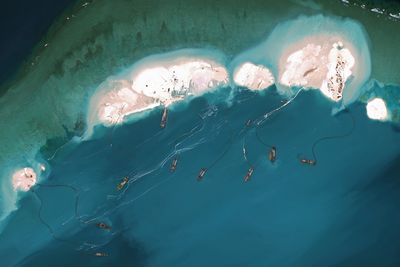Land as ProjectMilica Topalović

When Chinese military ships and warplanes took position in the South China Sea in 2014 in order to ensure an undisturbed realisation of an infrastructural project, the earthworks filling the shallow waters and coral reefs of Spratly Islands suddenly found themselves at the centre of media attention worldwide. It was fascinating to see the photographs of a typically unnoticed landscape of land reclamation—sandy islands growing in the sea, surrounded by batteries of dredgers and sand barges—garnering so much attention. Of course, these new patches of terra firma being constructed in the middle of the South China Sea are more than infrastructure: the newly built sites for Chinese bases controlling the maritime basin constitute a territorial encroachment, in “violation of the United Nations Convention of the Law of the Sea” and “causing ‘irreparable harm’ to the marine environment.” Apart from provoking an international uproar in disturbing the global geostrategic hierarchies, this case also speaks in a clear, and even spectacular manner, about the nature of earthworks. This example helps lift infrastructure and land construction out of the mundane world of engineering and muddy construction pits in order to remind of what philosophers of land or territory have long since established: that land (and infrastructure) are never innocent, or purely technical and utilitarian, but always strategic, political and ecological.
